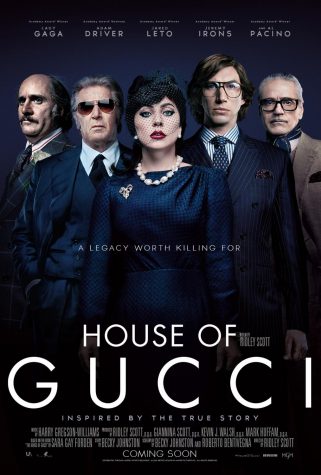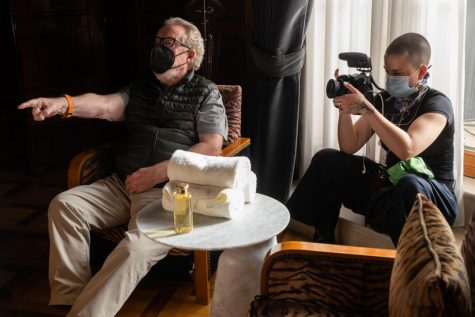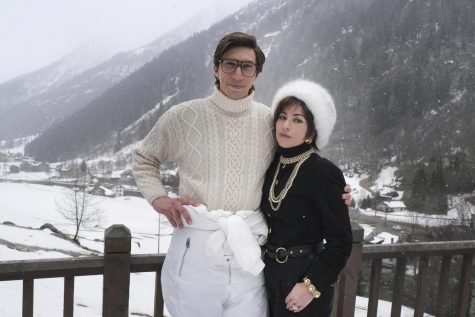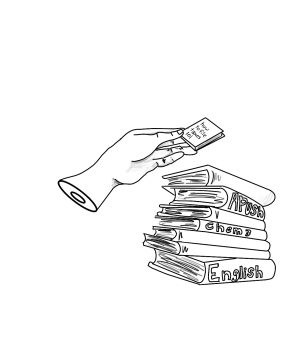‘House of Gucci’ has a fashionable presentation but nothing under the surface
December 8, 2021
If you traveled back in time 10 years and told a passerby on the street that in a movie co-starring Al Pacino, Jared Leto and Jeremy Irons, Lady Gaga not only gave the best performance, but carried the whole film, they would think you were insane. However, when it comes to Ridley Scott’s latest film, “House of Gucci,” a historical drama about the Gucci family and their fashion company, Gaga cements her dual mastery of pop music and acting.

Scott directs movies with a slow and methodical burn that drips with atmosphere, creating not just a story but a world for the viewer to step into. When executed properly, this style of filmmaking becomes a vessel for complex ideas and themes to be delivered to the audience on a deeper level. Over the course of “House of Gucci,” Scott pulls the audience into the film’s fancy, lavish interiors and beautiful Italian countryside exteriors. Unfortunately, that means very little when it is not used to convey any meaningful story, such as in the case with this movie. No message is delivered through its sluggish pacing, leaving the audience wondering why they bothered sitting through its lengthy two-hour and 40-minute runtime in the first place.
“House of Gucci” is a story about a lot of things, none of which the movie explores to a satisfactory degree. At its center, is the relationship between Patrizia Reggiani (Lady Gaga) and Maurizio Gucci (Adam Driver), as Reggiani pushes Maurizio to take a larger role in the family business in order to accrue power for herself. Over the course of the movie, the relationship sours as Maurizio begins to see the true motivations behind Reggiani’s actions. While Gaga is the star of the show, delivering a cunning and ruthless Reggiani whose motivations and actions are consistent throughout the entire runtime, Driver’s performance was also noteworthy. He portrays Maurizio’s shift from a starry-eyed young man to a hardened businessman in a realistic manner, and the quiet strength he brings to the character plays well against Gaga’s fiery persona.

However, in the second act of “House of Gucci,” the storyline shifts to explore relationships between the other members of the Gucci family and the business. These include patriarch Rodolfo Gucci (Jeremy Irons), uncle Aldo Gucci (Al Pacino) and cousin Paolo Gucci (Jared Leto). The three actors do a decent job but fail to match the energy brought by Gaga. The quality of the screenplay dips whenever Maurizio or Reggiani are off-screen, and most of the Gucci family interactions involving the other characters are exhaustingly unengaging, often feeling pointless in the overall plot. It is a shame too, because some ideas, like Paolo Gucci’s desire but ineptitude for fashion design, could have been entertaining if explored better.

In the simplest terms, “House of Gucci” lives up to its name in a very literal sense. Much of the movie consists of well-dressed characters sitting in elegant houses having conversations with each other. The problem is that this leaves the audience with very little reason to care about said conversations, and they are strung together with such little grace that the final product feels disjointed and unengaging.
“House of Gucci” has a lot of flair, some truly great performances and some incredible set design, costuming and makeup, but, ultimately, it fails to be a movie with any sense of direction. It feels like the highlights from the “House of Gucci” book the movie was based on were pulled out and stapled together without much in between, leaving the viewing experience confusing and unsatisfying. The movie is both too short and too long; there is not enough time to develop any plot points enough to make them interesting because there are simply too many. However, because of this the audience is left with no investment in the plot, so the movie feels slow, boring and, in the end, not a story worth telling at all.







